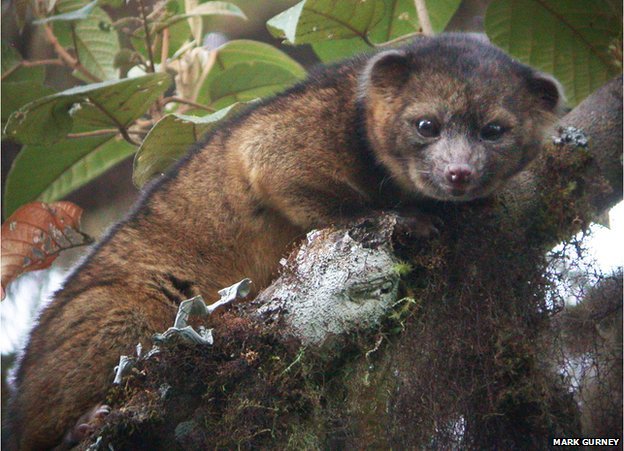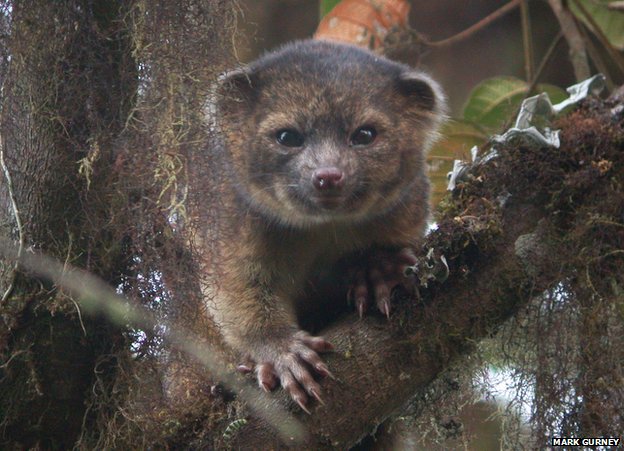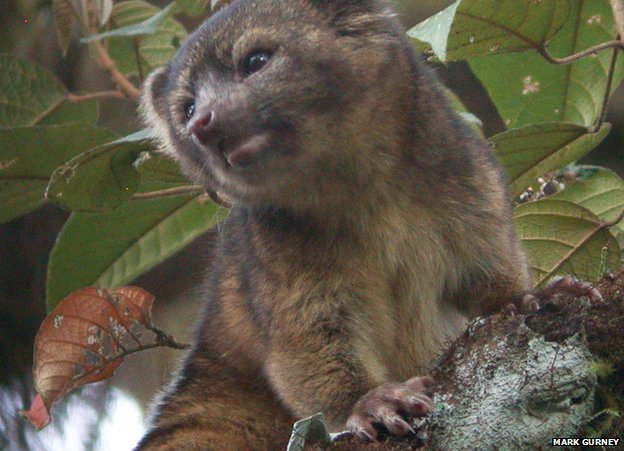Olinguito: The Newest Mammal Species

The olinguito is the first new species of carnivore to be found in the western hemisphere in 35 years. New species of bacteria, bugs and fish are fairly often tracked down, but new mammals are vanishingly rare. Especially carnivorous mammals.
The olinguito clocks in at 35 cm long, is the smallest member of the raccoon family, and lives in the cloud forests of Colombia and Ecuador. It’s brand new human name is Bassaricyon neblina, the neblina part coming from the Latin for clouds, referring to its habitat.
Kristofer Helgen is the proud zoologist that tracked this fella down. He works as a curator at the National Museum of Natural History Washington DC where there are hundreds of thousands of dead animal samples sat in storage. It’s in these sorts of treasure troves of corpses that most new species are now discovered.
Samples that have been overlooked or mislabeled are the nuggets of joy that these species hunters are searching for. With advanced DNA removal and sequencing technology it’s now possible to read DNA from even quite old samples. So, rather than traipsing through jungles on a fruitless hunt for a shy nocturnal creature, researchers can wade through pelts in relative comfort.
Interestingly, the animal samples are cleaned of remaining tissue by specially trained beetles (Dermestes vulpinus). How about that?

That’s how the olinguito was found: stuffed in a box at the back of a museum. After studying the bones, Kristofer was pretty sure he had a new species but needed definitive proof.
Once he’d got the DNA sample and compared it to the other species of the same family, he knew he had the proof necessary. But was it now extinct? The next job was to find one. They made predictions about it’s probable natural environment and off they went to Ecuador. After a decade, they found one.
In an interesting twist, there may well have been an olinguito kept in a zoo from 1967-1976 without realising what they had. Records show that the zoo had some olingas which are similar to olinguitos, and one of these olingas wouldn’t breed. The keepers couldn’t work out why. It’s quite possible they actually had an olinguito all along, no wonder it didn’t fancy the other animals enough to mate. Oooooh I bet they’re kicking themselves now.
Kristofer has also used this advanced DNA sampling technique to identify the biggest bat and the smallest of the bandicoots, but he says this newest find means the most to him. Good on you Mr Helgen and welcome to the world of taxonomy Mr Olinguito.
MORE CRITTERS:


















